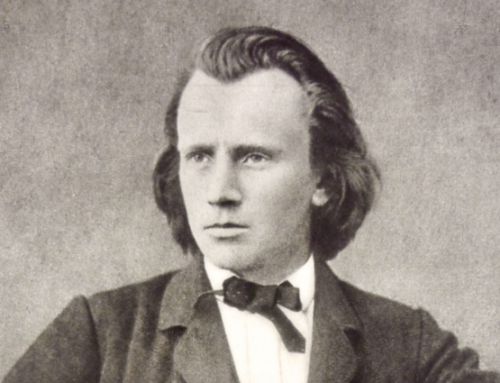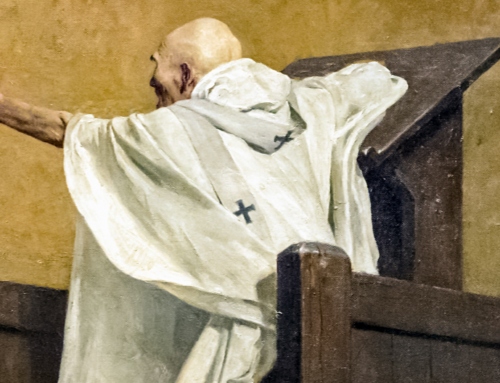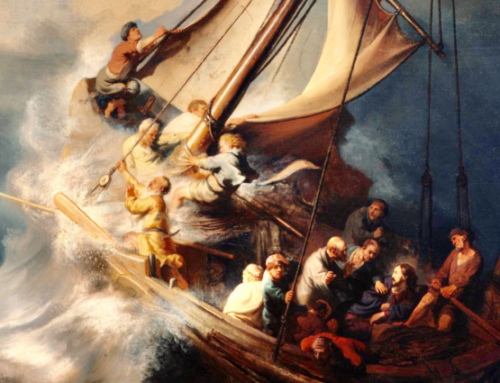French composer Guy Ropartz wrote Le Miracle de Saint Nicolas in 1905, based on a text by René Avril. From the Naxos recording of this work:
This legend in sixteen scenes introduces the story, familiar to the people of Lorraine, of St Nicholas bringing back to life the three boys murdered and pickled by the butcher. Its innocent simplicity contrasts with the rich polyphony of the Psalm: the prologue in popular form (Aeolian mode on F) draws from its fugal exposition a discreetly archaic air and the predominant atmosphere is that of a luminous pastoral (the first scene is repeated in the minor at the sunset of the fifth). Naive imitations of the sounds of night can be heard in the sixth scene and the irresistible progress of scenes fifteen and sixteen lead to a majestic chorale of faith, in B flat major, for unison chorus and orchestra. For the performance of this legend seventeen pictures were conceived by the Nancy painter P. R. Claudin and their fresh colours reflect the luminous poetry of the score.
Part One: Prologue – 00:00
Part One: Tableau 1 – 1:31
Part One: Tableau 2 – 2:48
Part One: Tableau 3 – 3:40
Part One: Tableau 4 – 4:54
Part One: Tableau 5 – 6:21
Part One: Tableau 6 – 7:45
Part One: Tableau 7 – 9:13
Part One: Tableau 8 – 11:00
Part Two: Prologue – 12:33
Part Two: Tableau 9 – 13:51
Part Two: Tableau 10 – 15:10
Part Two: Tableau 11 – 15:35
Part Two: Tableau 12 – 17:00
Part Two: Tableau 13 – 18:10
Part Two: Tableau 14 – 18:39
Part Two: Tableau 15 – 20:02
Part Two: Tableau 16 – 21:22
Part Two: Choral – 23:08
Text and timing information from Naxos Records.
This essay was first published here in December 2018.
The Imaginative Conservative applies the principle of appreciation to the discussion of culture and politics—we approach dialogue with magnanimity rather than with mere civility. Will you help us remain a refreshing oasis in the increasingly contentious arena of modern discourse? Please consider donating now.
We hope you will join us in The Imaginative Conservative community. The Imaginative Conservative is an on-line journal for those who seek the True, the Good and the Beautiful. We address culture, liberal learning, politics, political economy, literature, the arts and the American Republic in the tradition of Russell Kirk, T.S. Eliot, Edmund Burke, Irving Babbitt, Wilhelm Roepke, Robert Nisbet, Richard Weaver, M.E. Bradford, Eric Voegelin, Christopher Dawson, Paul Elmer More and other leaders of Imaginative Conservatism. Some conservatives may look at the state of Western culture and the American Republic and see a huge dark cloud which seems ready to unleash a storm that may well wash away what we most treasure of our inherited ways. Others focus on the silver lining which may be found in the next generation of traditional conservatives who have been inspired by Dr. Kirk and his like. We hope that The Imaginative Conservative answers T.S. Eliot’s call to “redeem the time, redeem the dream.” The Imaginative Conservative offers to our families, our communities, and the Republic, a conservatism of hope, grace, charity, gratitude and prayer.
The featured image is “Saint Nicholas Resuscitating Three Youths” (1433-35) by Bicci di Lorenzo. This file is made available under the Creative Commons CC0 1.0 Universal Public Domain Dedication and appears here courtesy of Wikimedia Commons.








Leave A Comment